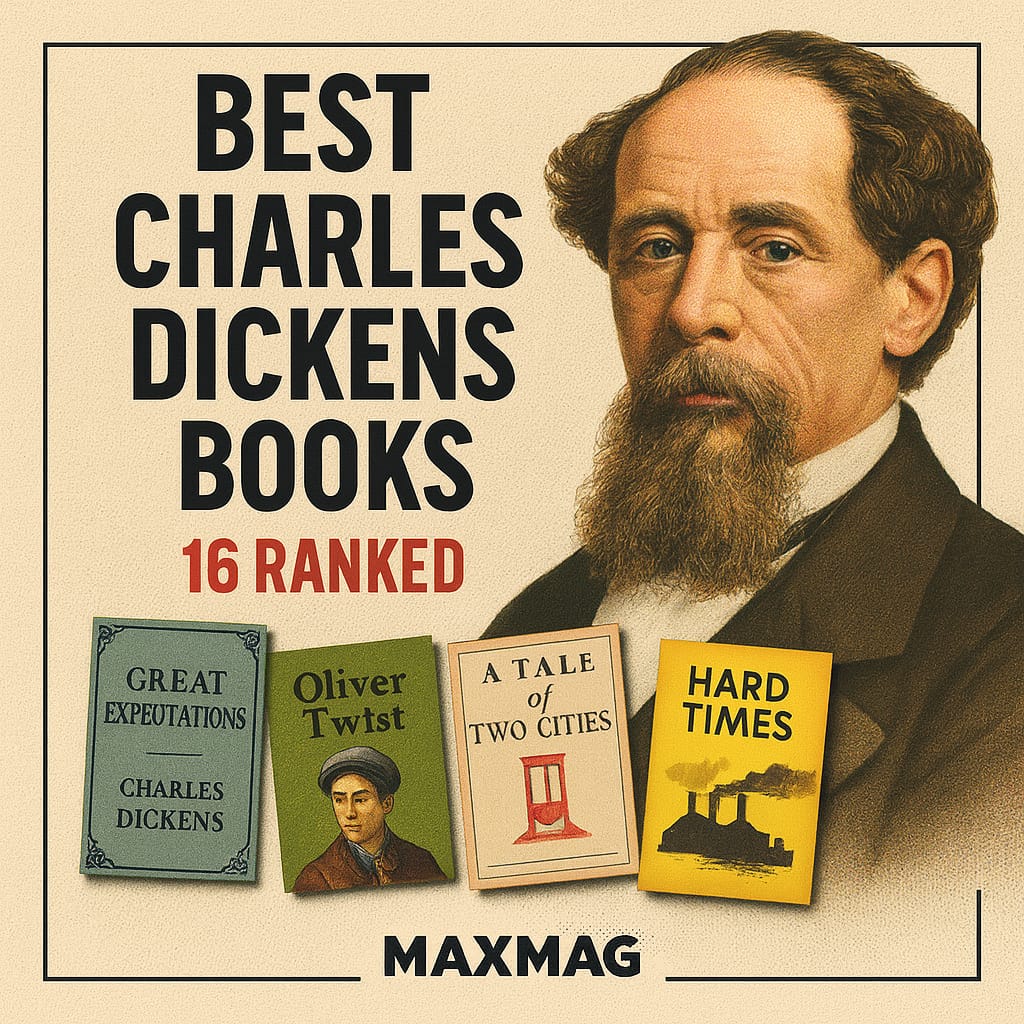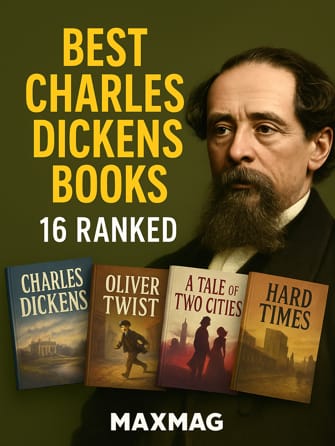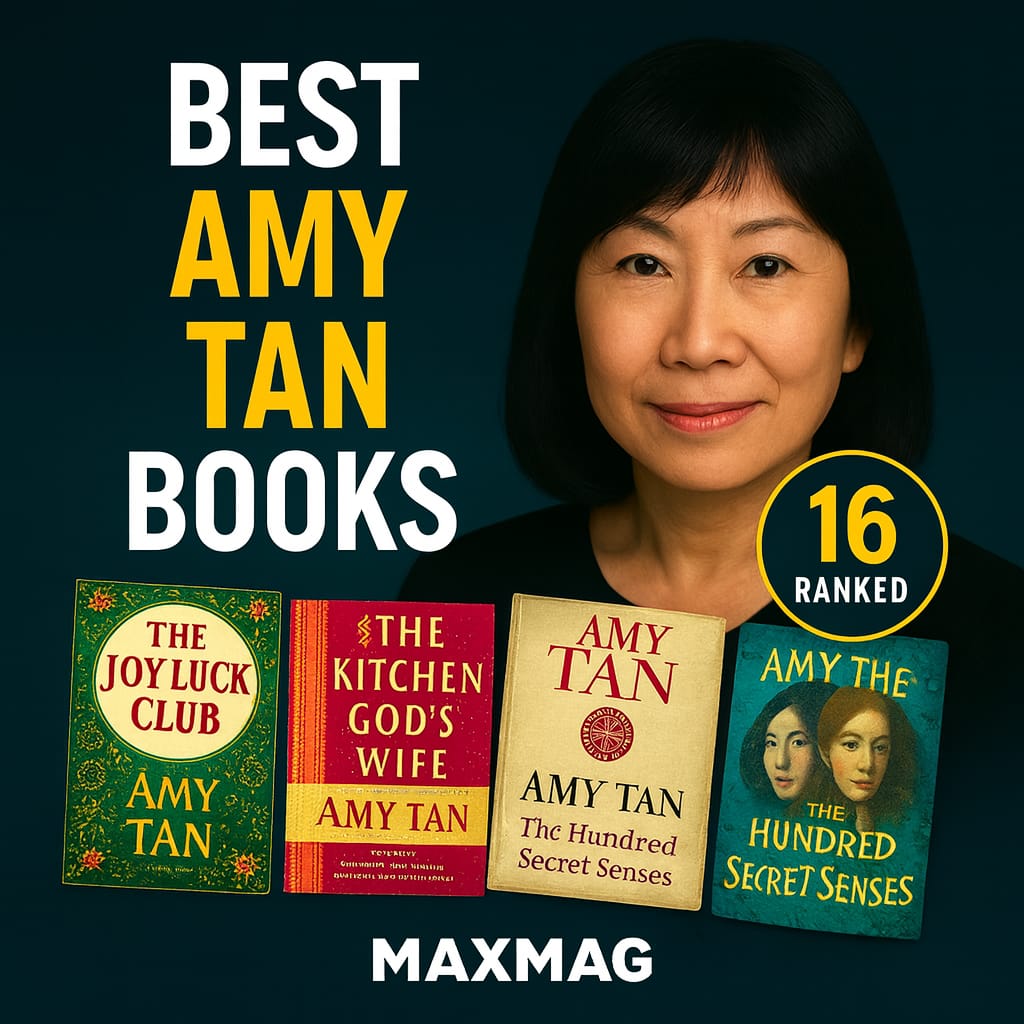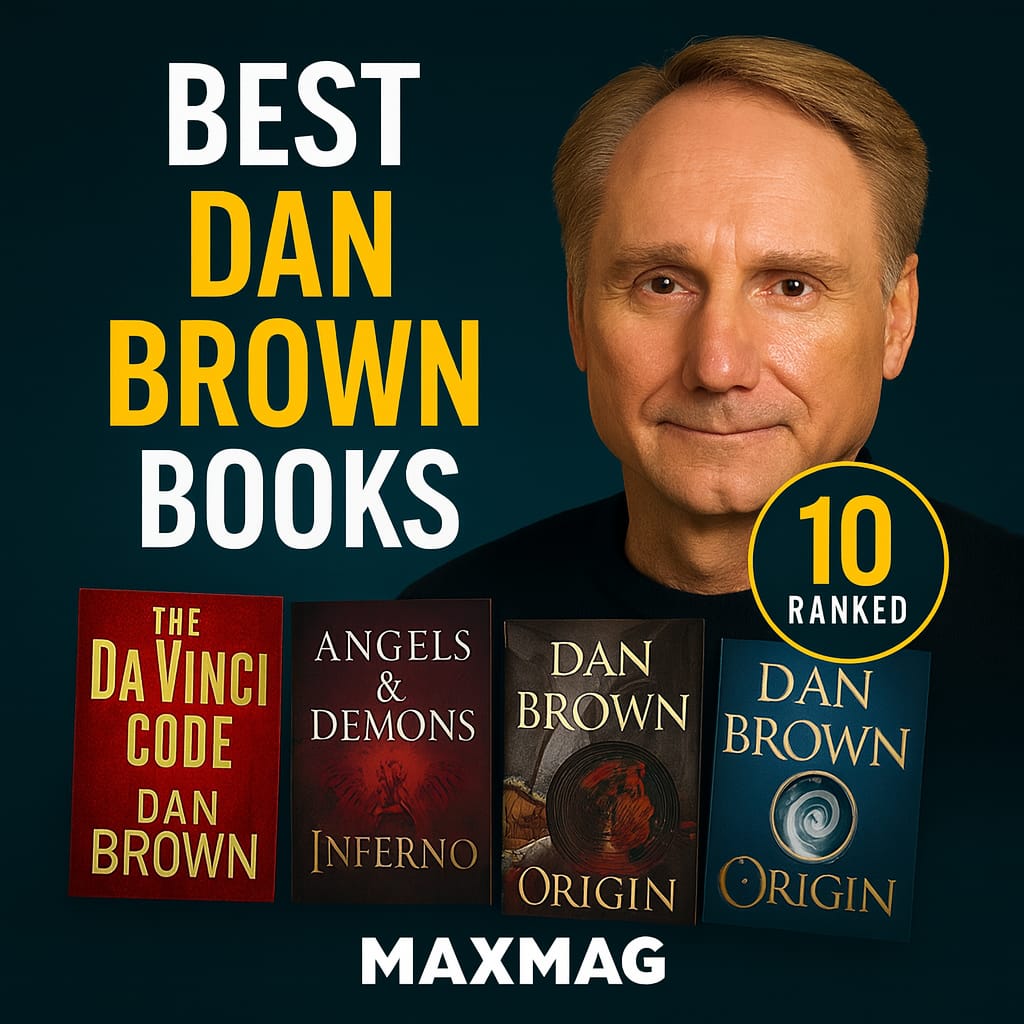
In English literary history, readers still cite the Best Charles Dickens Books as benchmarks of narrative power. Charles John Huffam Dickens was born in Portsmouth, England, and became the Victorian era’s defining novelist across serial fiction, short stories, journalism, and travel writing. He is commonly known for unforgettable characters and cityscapes, with widely read titles such as Great Expectations and A Christmas Carol. His career stretched from the 1830s to 1870, spanning early comic picaresque to darker social panoramas. The London street and the courtroom, the workhouse and the factory, the debtor’s prison and the drawing room, all pass through his pages. His books moved from weekly and monthly parts into clothbound volumes that traveled the globe. Generations of editors kept his serialized cadence intact. Few writers fused plot, place, and public debate with such stamina.
His breakout came when The Pickwick Papers caught fire among commuters and clubmen, while his perennial best-seller, A Tale of Two Cities, still anchors school lists and mass-market shelves. Readers meet poverty, class mobility, law and bureaucracy, found families, and redemption threaded through mystery and romance. The guide below captures his major novels, novellas, and nonfiction volumes that clear a simple bar: a community rating of at least 3.0 out of 5 on major reader platforms. We include first book-publication years to orient the period eye. The total count for this ranked file is sixteen titles. To keep comparisons clean, we present them as a ratings-led climb from deep cuts to consensus classics. That makes this survey a practical map of the Best Charles Dickens Books.
16 Best Charles Dickens Books in a Rising Rating Order
Methodology & Updates
Ratings were captured from Goodreads on October 19, 2025; where multiple editions exist, we referenced widely read listings and noted ties by earlier year, then A–Z title. As platforms re-rate or consolidate editions, positions may shift slightly; we’ll revisit periodically. This methodology keeps the Best Charles Dickens Books comparable across time.
#1) The Battle of Life – 1846
- Author: Charles Dickens
- Published: 1846
- Work Type / Genre Tags: novella, Christmas book
- Themes: sacrifice, family bonds, small-town romance
- Goodreads Rating: 3.19/5
In an English market town, the Jeddler household revolves around sisters Grace and Marian and their widowed father. A celebration collides with rumors and arrangements that unsettle a planned marriage. Marian faces a choice that threatens her sister’s happiness. Friends and suitors circle with mixed motives and partial truths. Misunderstandings multiply as a traveler’s return complicates loyalties. Private resolves harden into quiet acts that redirect futures. Festive rituals frame a revelation that defuses conflict without theatrical scandal. The story ends with a re-knit family and the cost of a hidden renunciation acknowledged.
#2) The Chimes – 1844
- Author: Charles Dickens
- Published: 1844
- Work Type / Genre Tags: novella, Christmas book, social fable
- Themes: poverty, hope, moral awakening
- Goodreads Rating: 3.22/5
In London on New Year’s Eve, messenger Trotty Veck struggles with grim headlines and harsher street talk. A charity dinner invitation intersects with a petty theft and a father’s doubt about his daughter’s match. Trotty longs to know whether poor people have any right to joy. The tower bells and their goblin attendants draw him into a vision where choices are tested. Alternate futures lay out the wreckage born from despair, suspicion, and social scorn. The vision tightens its grip as his loved ones face ruinous turns. A final peal slams toward a choice between surrender and faith in ordinary goodness. With daybreak, Trotty moves to bless a wedding and reject the counsel of hopelessness.
#3) The Haunted Man and the Ghost’s Bargain – 1848
- Author: Charles Dickens
- Published: 1848
- Work Type / Genre Tags: novella, Christmas book, gothic tincture
- Themes: memory, grief, moral consequence
- Goodreads Rating: 3.29/5
At a college in winter, chemist Redlaw broods over a wrong from years past. A phantom double offers him relief from sorrow if he will pass the same oblivion to others. Redlaw grasps at forgetting, only to see kindness dry up around him. The Tetterby family and a neglected child become a crucible for the bargain’s cost. Strained affections, sudden quarrels, and cold self-interest ripple through the house. The experiment on memory turns into a social contagion with chilling effects. A confrontation at midnight hints that suffering is the root of fellow feeling. The night yields to an antidote: remembrance joined to compassion restores the circle.
#4) The Cricket on the Hearth – 1845
- Author: Charles Dickens
- Published: 1845
- Work Type / Genre Tags: novella, Christmas book, domestic tale
- Themes: home, trust, reconciliation
- Goodreads Rating: 3.47/5
Carrier John Peerybingle and his young wife Dot keep a humble, lively home where a cricket chirps as guardian spirit. A mysterious lodger, a blind girl’s courtship, and a hard-hearted toy maker intersect under one roof. John fears betrayal when appearances turn against his wife. Neighbors weigh in as small-town talk feeds a looming confrontation. A ruse baits the cruel and tests the loyal. The household’s warmth flickers as hidden identities edge into the open. A dramatic reveal aims past punishment to a merciful reunion. The ending restores domestic harmony with vows renewed and futures reset.
#5) Pictures from Italy – 1846
- Author: Charles Dickens
- Published: 1846
- Work Type / Genre Tags: travelogue, nonfiction
- Themes: observation, culture, journey
- Goodreads Rating: 3.53/5
On the road through Genoa, Rome, Naples, and beyond, the narrator records streets, churches, theaters, and inns. Carnival scenes, pilgrim processions, and roadside fairs crowd the itinerary. Curiosity drives him toward neighborhoods and trades that guidebooks overlook. Encounters with ciceroni, coachmen, and fellow travelers sketch a moving cast. Misadventures with lodgings and border checks complicate the schedule. Vantage points shift from galleries to alleys as impressions accumulate. A return route gathers final vignettes that frame the tour’s lessons. The book closes with a last look back across the Alps and a promise to carry Italy home in memory.
#6) Hard Times – 1854
- Author: Charles Dickens
- Published: 1854
- Work Type / Genre Tags: novel, industrial fiction
- Themes: utilitarianism, class conflict, education
- Goodreads Rating: 3.55/5
In the mill town of Coketown, schoolmaster Gradgrind drills facts into children while factory owner Bounderby boasts of self-made origins. Louisa and Tom Gradgrind grow up with appetite starved and imagination stunted. Louisa’s arranged marriage to Bounderby traps her in a calculated home. Stephen Blackpool, an honest hand, faces a cruel choice in work and love. A bank robbery and a circus troupe complicate alliances and alibis. Miscalculations pile up as secrets fray respectability. A confrontation forces confessions and unexpected aid. The story ends with reshaped lives and a chastened creed, not a fairy-tale fix.
#7) American Notes – 1842
- Author: Charles Dickens
- Published: 1842
- Work Type / Genre Tags: travel narrative, reportage
- Themes: democracy, reform, observation
- Goodreads Rating: 3.63/5
Landing in Boston, the narrator surveys schools, prisons, asylums, and civic halls before pushing inland. Steamboats, stagecoaches, and river towns shape a fast itinerary. Political talk and newspaper offices pepper the route. Courtrooms, charitable institutions, and factories provide case studies of American promise and peril. Encounters with campaigners and editors sharpen his notes. A southern leg widens the ledger with scenes that darken the travelogue. The return north collects closing impressions about manners and institutions. The journal ends with a transatlantic crossing and a ledger of what the tour revealed.
#8) The Mystery of Edwin Drood – 1870
- Author: Charles Dickens
- Published: 1870
- Work Type / Genre Tags: novel, unfinished mystery
- Themes: obsession, jealousy, disappearance
- Goodreads Rating: 3.66/5
In the cathedral city of Cloisterham, choirmaster John Jasper hides an opium habit and a turbulent infatuation. His nephew Edwin is engaged to Rosa, though both harbor doubts. A new arrival, Neville Landless, clashes with Edwin and draws suspicion. Jasper’s watchfulness tightens as a holiday visit sets the stage. A stormy night marks Edwin’s last known appearance. Investigations ripple through the Close while rumors harden into theories. Clues gather around a watch chain, a river, and a crypt. The case halts where the author left it, with the final design implied rather than declared.
Early Currents → A Waypoint in the Best Charles Dickens Books

#9) Sketches by Boz – 1836
- Author: Charles Dickens
- Published: 1836
- Work Type / Genre Tags: sketches, journalism, short prose
- Themes: London life, spectacle, work
- Goodreads Rating: 3.72/5
Across streets, theaters, docks, and parlors, a young reporter catalogues manners and trades. Quick portraits introduce cabmen, clerks, costermongers, and shopkeepers. Everyday incidents serve as vignettes with sharp entrances and exits. Friends on promenades and families at supper anchor the set pieces. A police office, a debtor’s room, and stage wings broaden the map. Coincidences spark small dramas that resolve within a few pages. Seasonal scenes return with new details as the city shifts. The series closes with a sense that the metropolis itself is the central character.
#10) Great Expectations – 1861
- Author: Charles Dickens
- Published: 1861
- Work Type / Genre Tags: novel, bildungsroman
- Themes: ambition, guilt, inheritance
- Goodreads Rating: 3.78/5
On the Kent marshes, orphan Pip meets an escaped convict and keeps a fearful secret. A summons to Satis House throws him into the orbit of Miss Havisham and Estella. Pip longs to rise as a gentleman and escape the forge. His friendships bend under the costs of pride and concealment. A benefactor’s identity flips his understanding of debt and duty. Old crimes and new loyalties entwine as danger draws near. The promise of marriage gives way to a sober recognition of self. The ending seals a tempered future shaped by lessons learned.
Later-Middle Turns — Pacing the Best Charles Dickens Books Canon
#11) The Old Curiosity Shop – 1841
- Author: Charles Dickens
- Published: 1841
- Work Type / Genre Tags: novel, sentimental quest
- Themes: flight, greed, guardianship
- Goodreads Rating: 3.79/5
In a London shop crammed with relics, Little Nell lives with her kindly but imprudent grandfather. Mounting debts bring the usurer Quilp into their lives. To elude ruin, the pair slip out of the city by night. Vagabonds, showfolk, and strangers offer help or harm along the road. A parallel search party traces rumors through taverns and parishes. Illness, weather, and hunger raise the stakes as winter closes in. Paths cross again where an old bargain finally collapses. The tale resolves with an end that marks a pilgrimage completed.
#12) Barnaby Rudge – 1841
- Author: Charles Dickens
- Published: 1841
- Work Type / Genre Tags: novel, historical
- Themes: riot, loyalty, manipulation
- Goodreads Rating: 3.82/5
Set against the Gordon Riots of 1780, simple-hearted Barnaby and his pet raven move through an anxious London. A tavern becomes the rally point for agitation and intrigue. Families on both sides of the conflict are drawn into the streets. Plots, disguises, and arrests tangle private grievances with public violence. Fires and mobs change the city overnight. Barnaby’s fate swings with shifting crowds and calculated betrayals. Trials and reprieves arrive as order returns by force. The novel ends with households piecing themselves together after the storm.
#13) Martin Chuzzlewit – 1844
- Author: Charles Dickens
- Published: 1844
- Work Type / Genre Tags: novel, satire
- Themes: self-interest, inheritance, emigration
- Goodreads Rating: 3.84/5
Old Martin Chuzzlewit’s wealth attracts schemers who flatter, maneuver, and spy. Young Martin quarrels at home and sails for America in search of fortune. An architect’s apprenticeship sours into a cautionary lesson. In the States, fever swamps and hollow pitches expose false promises. Back in England, a false nurse weaves herself into a household’s heart. Confidences are traded while a will remains the prize. A criminal plot ripens toward confrontation and confession. The final arrangements reward steady affections and expose greedy masks.
#14) The Pickwick Papers – 1837
- Author: Charles Dickens
- Published: 1837
- Work Type / Genre Tags: novel, picaresque, comic travel
- Themes: friendship, misadventure, social observation
- Goodreads Rating: 3.85/5
Samuel Pickwick forms a club to roam England and report on curiosities. Coach journeys, inns, and courts supply episodes of mishap and merriment. A quick-witted servant, Sam Weller, joins and alters the party’s fortunes. Lawsuits and misunderstandings snag the gentlemen in consequence. Friendships tighten as debts, duels, and practical jokes escalate. A prison stay reframes the hazards of city life. A reconciliation resets tempers and debts alike. The club’s travels conclude with marriages, retirements, and renewed good cheer.
#15) Oliver Twist – 1838
- Author: Charles Dickens
- Published: 1838
- Work Type / Genre Tags: novel, social crime
- Themes: orphanhood, exploitation, identity
- Goodreads Rating: 3.88/5
Born in a parish workhouse, Oliver is apprenticed, abused, and finally flees to London. There he falls in with Fagin’s gang and the Artful Dodger. Kind strangers briefly shelter him before fate drags him back to danger. A locket and a portrait hint at a hidden past. Nancy’s divided loyalties strain under Sikes’s violence. Burglary plots and stakeouts converge on a darkened house. Revelations about birth and name loosen the gang’s grip. The last chapters disperse the villains and restore Oliver to a family circle.
#16) A Tale of Two Cities – 1859
- Author: Charles Dickens
- Published: 1859
- Work Type / Genre Tags: novel, historical
- Themes: revolution, sacrifice, resurrection
- Goodreads Rating: 3.88/5
Between London and Paris, Doctor Manette returns from unjust imprisonment to reunite with his daughter Lucie. Former spy Charles Darnay renounces a hated aristocratic name. Sydney Carton drifts through chambers with talent wasted and affections concealed. A wine cask breaks in Saint Antoine as the city tightens for revolt. Trials on both sides of the Channel test identity and allegiance. Old wrongs emerge in letters hidden and oaths remembered. A tribunal’s decree sends the family into a final appeal. An exchange at the scaffold closes the circle with a costly redemption.
Momentum Builds — Cresting the Best Charles Dickens Books
Charles Dickens: Life & Legacy
Charles Dickens (1812–1870) rose from a childhood shadowed by debtors’ prison and clerking to become the era’s most formidable serial novelist, essayist, and performer. Beginning as a parliamentary reporter, he vaulted to fame with The Pickwick Papers and then deepened his range across Oliver Twist, David Copperfield, Bleak House, A Tale of Two Cities, Great Expectations, Little Dorrit, and Our Mutual Friend. He wrote sketches, travelogues, Christmas books, and public addresses, while staging dramatic readings that filled halls. His recurring concerns—law’s delays, urban poverty, childhood threat, institutional folly, and the fragile dignity of labor—remain legible to new readers. Though rooted in the Victorian newspaper and the monthly part, his narrative engines taught later popular fiction how to move. His influence threads into classrooms, theater, television, and film, and his characters—Scrooge, Oliver, Miss Havisham, Micawber—are cultural shorthand. In literary history he stands as a civic artist whose storytelling reached well beyond the page; selections in this guide frame how the Best Charles Dickens Books chart that reach.
Conclusion
This guide gathered sixteen works across four decades, from early sketches and Christmas novellas to historical epics and late mysteries, and arranged them by community rating—a practical slice of the Best Charles Dickens Books in one view. At a glance, the arc moves from experiments and seasonal tales toward large-scale novels, then to a final, unfinished case study; for a concise author overview, the Library of Congress maintains primary materials and digitized editions that contextualize Dickens’s career (Library of Congress profile).
Recurring concerns—class, law, found family, education, and moral choice—link London’s alleys to courts and countinghouses, while historical backdrops widen the lens. For a journalistic sketch of the reputation Dickens holds in American culture, see this accessible overview from a major U.S. magazine (Smithsonian Magazine primer); taken together, these sources triangulate why the Best Charles Dickens Books still pull new readers in.
FAQ: What to know about the Best Charles Dickens Books
Q1: How did Dickens break out, and where should I start within the Best Charles Dickens Books?
Q2: Are the Best Charles Dickens Books primarily novels, or do travelogues belong here too?
Q3: Why do some beloved titles rank lower?
Q4: What themes unify the Best Charles Dickens Books across eras?
Q5: Do unfinished or shorter works merit a spot among the Best Charles Dickens Books?





